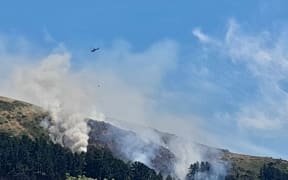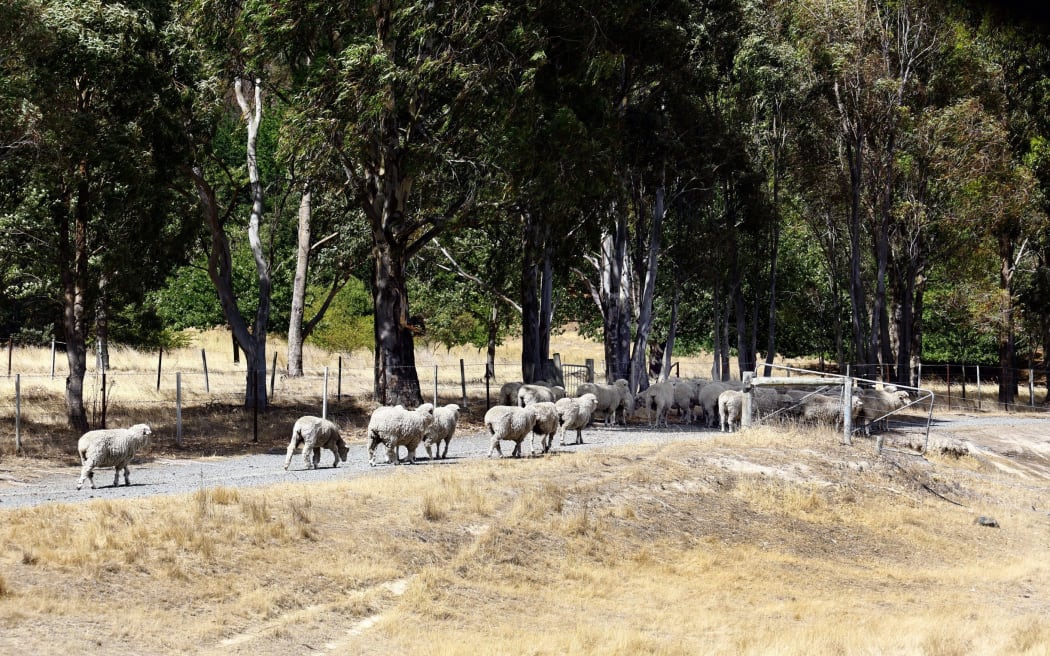
Blenheim has had below average rainfall every month since July last year. Photo: Supplied / Stuff
Creeks in Marlborough that have "never dried out before" are empty, leaving questions about how long until the region needs tighter water restrictions.
Surface water hydrologist Charlotte Tomlinson told the Marlborough District Council's environment and planning committee on 1 February it was up to farmers and vineyard owners to tell them whether dry conditions were affecting them.
"Between council or Niwa [and] the community, we can decide whether the effects are impacting us enough to go to MPI [Ministry for Primary Industries] and say that assistance is needed for a certain sector," Tomlinson said.
"It's really just a watch-this-space, but at the moment there is no significant rainfall in the short-term forecast."

Marlborough Sounds ward councillor Barbara Faulls said she had met with a Marlborough primary sector group the day before the committee meeting, where the possibility of a drought had been discussed.
"One of the comments that is coming through is that the outer Sounds are extremely dry at the moment, and just prior to Christmas was really no concern, a lot of areas were quite wet," Faulls said.
"But now, like if you talk to Titirangi farmers, there are areas where creeks have dried out where they've never been dry before.
"I was talking to one of the environmental staff that were saying out at the Wairau Bar there [are] creeks and ditches that have dried out that have never been seen dry before."
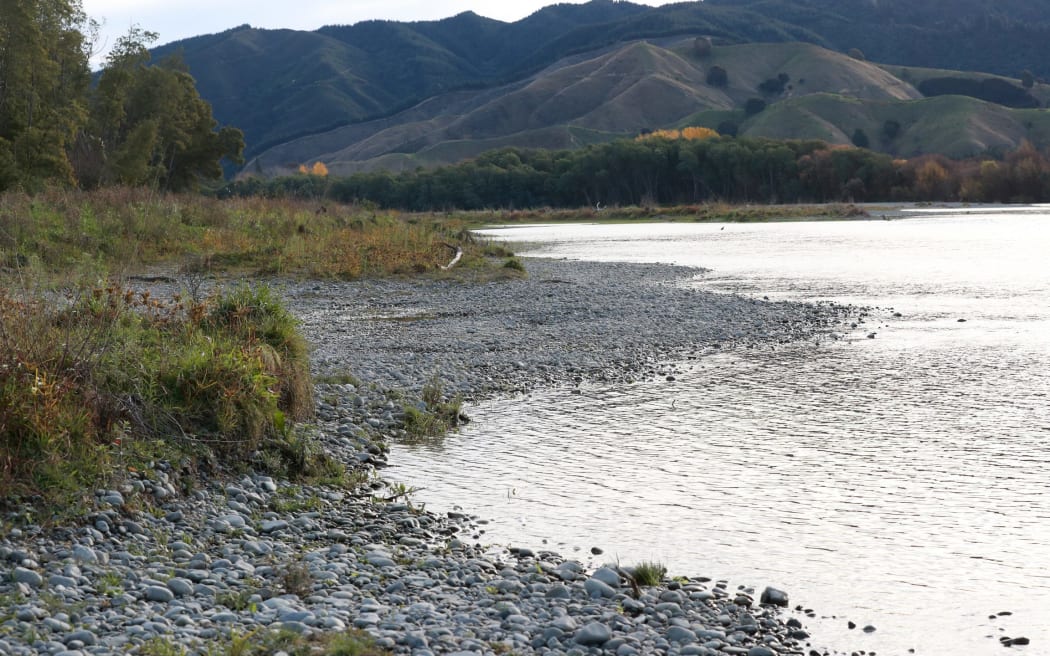
The Wairau River, a main source of water for irrigations, had a low base flow throughout winter last year. Photo: Supplied / Stuff
Tomlinson told the committee rainfall in Blenheim had been low every month since June, with just 14.2mm recorded in December. January recorded even less, at 6mm.
From 1 July to 1 February, Blenheim had about 160mm of rain.
"That's about half of what you would expect in an average year," Tomlinson said.
"Blenheim would usually start to go into moisture deficit in September, but in this case we've been in moisture deficit since July.
"At this stage small amounts of rain that we do receive are quickly lost, evaporated, and then pasture and crop growth really relies on irrigation alone."
The ongoing low rainfall had limited recharge of the Wairau River aquifer too.
The aquifer was the main groundwater system underlying the Wairau Plain and a source of irrigation, drinking and stock water.
Tomlinson said data showed most of the aquifers were within the lower quartile for mid-summer.
Base flow of the Flaxbourne River and Awatere River had been in the lower quartile since early September and October respectively.
The region definitely had the "smell of going into a drought", Marlborough Sounds ward councillor Ben Minehan said.
He asked how long it would be before the Southern Valleys area "gets cut off" should there be no rain.
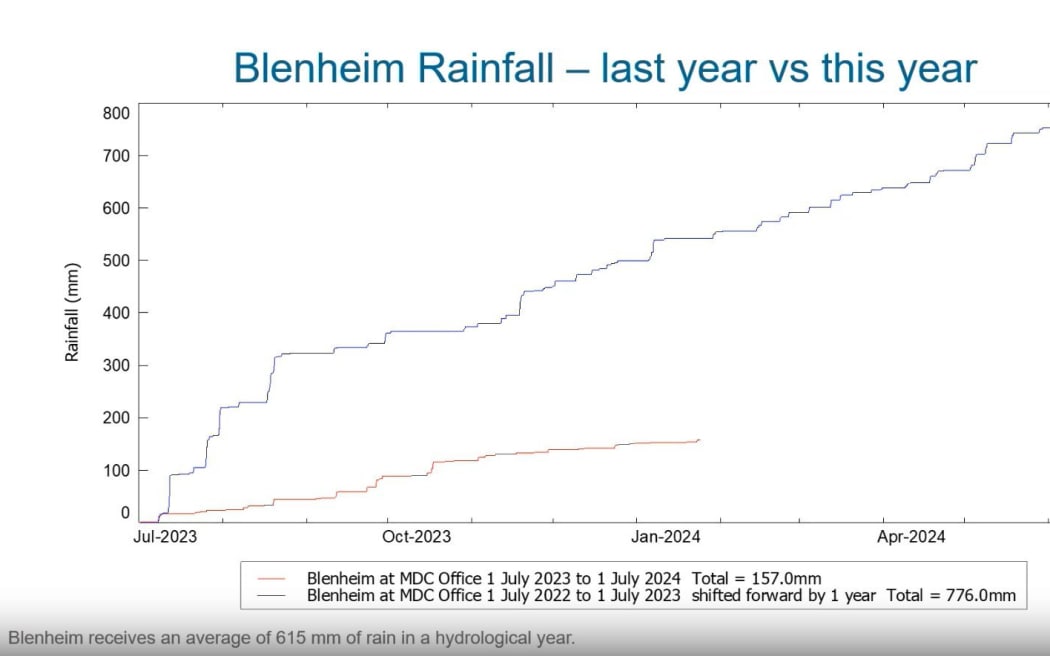
Rainfall in Blenheim is significantly lower this hydrological year (brown line) compared to last (blue line). Photo: Supplied / Marlborough District Council
The Southern Valleys' Irrigation Scheme was constructed to provide irrigation water to horticultural, farming and rural residential properties over about 4500 hectares south of Renwick.
Water was sourced from the Wairau River immediately below its confluence with the Waihopai River.
In 2020, the scheme was shut off for a month, leaving some vineyard operators "hand-carting" water from Blenheim.
The answer from council staffers was not entirely clear, but environmental protection officer Sadie Harris did give an update on restrictions to date.
Harris said there was just over 3400 consent meters in Marlborough, or meters that monitored consented water takes.
Some of those consent holders were only required to provide data annually.
Newer consents were on a telemetry system, which meant a third party provided data automatically that the council monitored.
Some consent holders had been told to stop taking water due to the dryness - although the shutdowns had only affected a minority of consent holders.
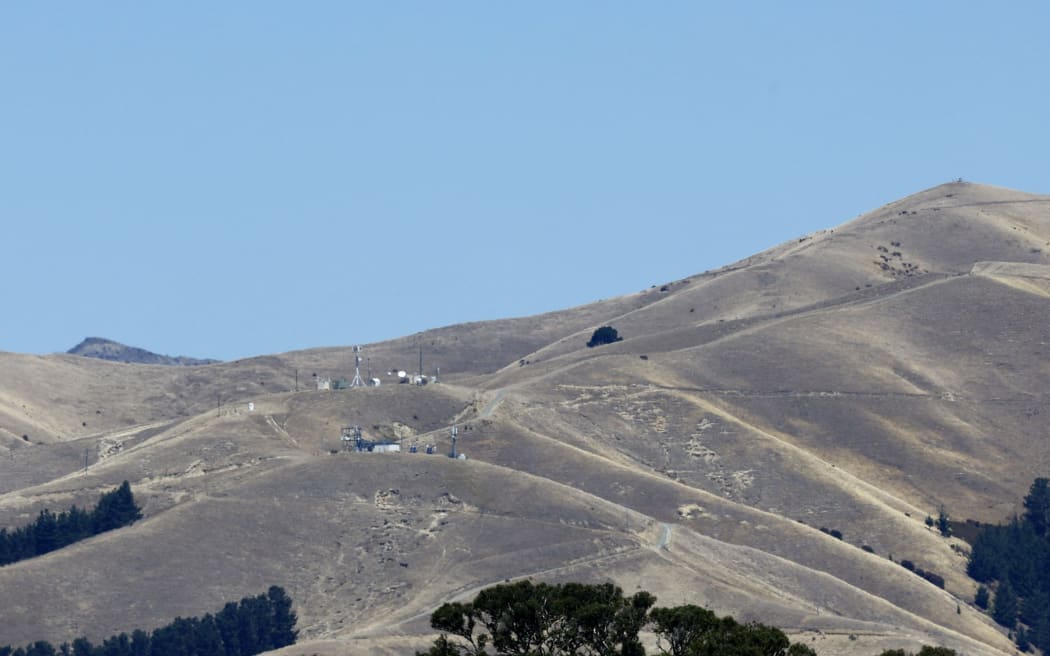
The Wither Hills, in Blenheim, are closed to the public due to fire risk. Photo: Supplied / Stuff
Since December, there had been 17 overtakes, or instances of people taking water without consent, Harris said.
Nine of the 17 consent breaches had been resolved, she said.
Sometimes property owners affected by a shutdown had another consent that wasn't affected, and their consents all came under one consent meter, Harris said.
"Or there has been a technical issue on the meter, which does happen. In that instance they have to get someone out to check the meter out straight away."
Harris said if tighter restrictions were needed there would be discussions between the council and landowners to let them know.
Meanwhile, Marlborough had the second highest sunshine hours in January, according to NIWA.
A total of 317 hours was recorded, just two hours behind first place, Nelson.
The NIWA climate summary said according to the New Zealand Drought Index (NZDI), "extremely dry conditions" developed during January in parts of Marlborough, and "small pockets" of meteorological drought emerged in south Marlborough.
LDR is local body journalism co-funded by RNZ and NZ On Air.

